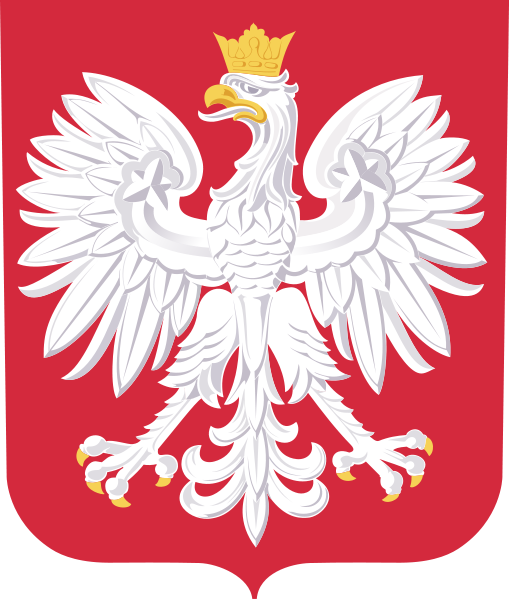Online first
Current issue
Archive
Most cited in 2024
About the Journal
Editorial Office
Editorial Board
Copyright and self-archiving policy
Information clause on the processing of personal data
Declaration of accessibility
Instructions for Authors
Instructions for Reviewers
Contact
Reviewers
2024
2023
2022
2020
2021
2019
2018
2017
2016
2015
2014
2013
Editing and translations
ORIGINAL PAPER
Impact of psychomotor performance and core body temperature on exercise performance in athletes
1
Wrocław University of Science and Technology, Wrocław, Poland (Faculty of Medicine,
Department of Preclinical Sciences, Pharmacology and Medical Diagnostics)
2
Medical Centre „PZU Health”, Wrocław, Poland
3
Heart Centre MEDINET, Wrocław, Poland (Department of Cardiac Surgery)
Online publication date: 2025-08-26
Corresponding author
Robert Skalik
Politechnika Wrocławska, Wydział Medyczny, Katedra Nauk Przedklinicznych, Farmakologii i Diagnostyki Medycznej, ul. Hoene-Wrońskiego 13c, 58-376 Wrocław
Politechnika Wrocławska, Wydział Medyczny, Katedra Nauk Przedklinicznych, Farmakologii i Diagnostyki Medycznej, ul. Hoene-Wrońskiego 13c, 58-376 Wrocław
Med Pr Work Health Saf. 2025;76(3):179-92
HIGHLIGHTS
- Psychomotor performance affects exercise capacity.
- Neurothermometabolic index is a reliable marker of exercise capacity.
- Core body temperature during acute exercise affects psychomotor performance.
KEYWORDS
exercise performancecentral nervous systemathletespsychomotor performancecore body temperaturespiroergometry
TOPICS
ABSTRACT
Background: The development of research on exercise physiology in the last several years has allowed to better understand mechanisms affecting exercise performance in athletes. Despite this, the causes of exercise intolerance in athletes are not fully elucidated. The exercise performance is a complex process and regardless of the proper functioning of the cardiovascular system may be subject to significant changes
under the influence of nervous system and thermoregulatory mechanisms. The purpose of this work is to assess the relationship between psychomotor performance (sprawność psychomotoryczna – SP), core body temperature (Tc) and exercise performance parameters as measured by spiroergometry (cardiopulmonary exercise testing – CPX) and the diagnostic accuracy of neurothermometabolic index (NTMI)
as a new marker of exercise performance in athletes. Material and Methods: Forty-four healthy athletes participated in the study. Each of the examined athletes underwent CPX for the assessment of ventilatory parameters (maximal oxygen consumption – VO2max, minute ventilation – VE, ventilatory equivalent for carbon dioxide at anaerobic threshold – VECO2AT, maximal carbon dioxide output – VCO2 and anaerobic threshold), SP tests (average reaction time to light stimulus, the number of correctly received light stimuli, number of missed light stimuli) before and immediately after CPX. In addition, Tc was continually measured during CPX. Followingly, NTMI was calculated using Tc during the maximum exercise, oxygen consumption at anaerobic threshold and average reaction time to light stimulus as measured after CPX. Results: A significant relationship was found between Tc during the maximum effort in CPX and SP after CPX. A significant relationship between SP before CPX and VECO2AT during CPX was also confirmed. Psychomotor performance shortly after CPX was also
significantly related to VCO2. In addition, NTMI was significantly associated with CPX parameters. Conclusions: The study results confirmed
the relevant relationship between SP, Tc during the maximum exercise and ventilatory parameters as measured by CPX in athletes.
Neurothermometabolic index is a reliable marker of exercise performance in athletes. Med Pr Work Health Saf. 2025;76(3):179–192
We process personal data collected when visiting the website. The function of obtaining information about users and their behavior is carried out by voluntarily entered information in forms and saving cookies in end devices. Data, including cookies, are used to provide services, improve the user experience and to analyze the traffic in accordance with the Privacy policy. Data are also collected and processed by Google Analytics tool (more).
You can change cookies settings in your browser. Restricted use of cookies in the browser configuration may affect some functionalities of the website.
You can change cookies settings in your browser. Restricted use of cookies in the browser configuration may affect some functionalities of the website.





